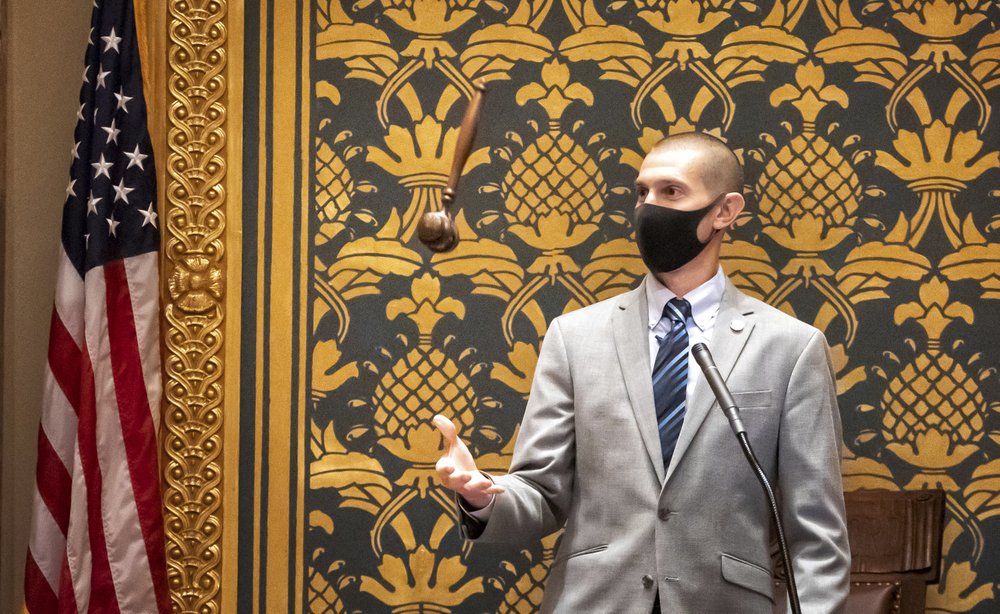Minnesota
GOP backs off from seeking to strip Minnesota governor of emergency powers

MINNEAPOLIS (AP) — With coronavirus cases and deaths soaring to record levels in Minnesota, Republican lawmakers backed down Thursday from making another futile attempt to strip Democratic Gov. Tim Walz of the emergency powers he has used to respond to the pandemic.
Lawmakers from both parties acknowledged as they gathered for the sixth special session of the year that the situation is serious. Democrats strongly defended the governor’s handling of the public health crisis, while leaders of the House GOP minority dialed back their usual criticisms. Instead they offered a mostly symbolic proposal that would let the Legislature modify or rescind the governor’s individual orders, in hopes of getting more of a voice in the pandemic response.
The Minnesota Department of Health reported a record 7,228 new cases Thursday, pushing the state’s cumulative case count past 200,000 to 201,795. And it reported 39 new deaths — the second-highest one day total so far following a daily record of 56 deaths Wednesday — for a total of 2,793 since the pandemic reached the state eight months ago.
“The numbers are grim, the situation is dire, the number of deaths are increasing at an alarming rate. The number of hospitalizations are increasing at an alarming rate,” Democratic House Speaker Melissa Hortman, of Brooklyn Park, told reporters. She went on to add: “The governor needs all the tools in the toolbox to get this virus under control.”
Hortman said Walz is doing the best he can to balance public health and economic needs, given the lack of a federal plan to provide more aid, and resistance by leaders in neighboring states to stronger measures such as mask mandates.
“I think we’ve seen a colossal failure of leadership over there in the Dakotas,” the speaker said. “We have the highest death rate per-capita in North Dakota and South Dakota on the entire planet. Those are not really good neighbors at this point.”
Democratic House Majority Ryan Winkler, of Golden Valley, said it’s “not that onerous” to ask people to wear masks, stay home when sick and practice social distancing. “We have essentially an invasion coming from the Dakotas and we need to do everything we can to stop it,” he said.
House Republican leaders framed their bill as giving legislators their own tools in the toolbox to bring the concerns of their constituents, businesses and schools to the table. They said their only option is now to rescind the peacetime state of emergency that gives the governor his special powers. Doing so would cancel all his pandemic executive orders, and that would require both chambers to agree. House Democrats have blocked all previous GOP efforts to do that.
“What this bill is about is the Legislature having a little bit of a say. …This bill isn’t about whether people believe COVID is real or not. It is real. And people should wear masks, and they should be careful and they should social distance,” GOP House Minority Leader Kurt Daudt, of Crown, said during the debate.
Under the bill by Rep. Barb Haley, of Red Wing, a governor’s executive orders would still have full force for at least 30 days. But after 30 days, the Legislature would get the option of rescinding or amending those orders. The vote to suspend the rules and take up the proposal failed on a 60-to-73 vote that fell mostly along party lines.
Meanwhile, a complicated political chess game played out in the Republican-controlled Senate. The move was aimed at blocking Walz from appointing Lt. Gov. Peggy Flanagan to the U.S. Senate if U.S. Sen. Amy Klobuchar takes a position in President-elect Joe Biden’s administration.
The state Senate elevated maverick Democratic Sen. David Tomassoni, of Chisholm, to serve as Senate president through the end of the year. He’s meant to be a temporary replacement for GOP Senate President Jeremy Miller, of Winona.
Under the Minnesota Constitution, the Senate president becomes lieutenant governor if that position becomes open. That’s a problem for Senate Republicans, whose majority is expected to slip from the current three seats to just one in the 2021 session. Democrats would stand a reasonable chance of flipping Miller’s southeastern Minnesota seat in a special election if he became lieutenant governor. But Republicans might be able to capture Tomassoni’s Iron Range seat if it becomes vacant.
The precedent was set in 2017 when then-Gov. Mark Dayton appointed then Lt. Gov. Tina Smith to the U.S. Senate, which meant Republican Senate President Michelle Fischbach had to replace Smith despite GOP objections
Democratic leaders denounced the preemptive move,
“People are dying and they’re playing parlor games,” Winkler said. “Irresponsible.”

